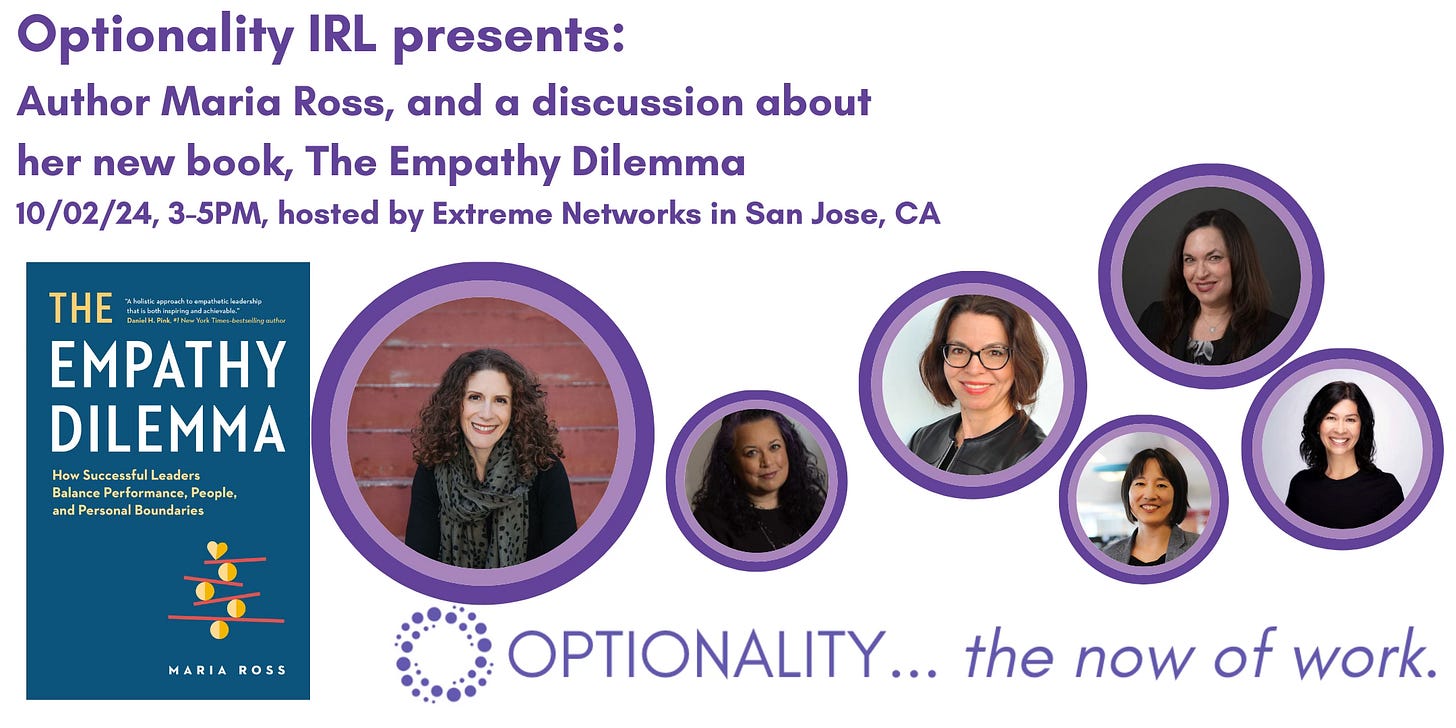DEEP DIVE: How to Pitch, Prepare, and Perform a Killer Keynote
Hint: It's about the audience, not you.
This summer, I attended a few conferences, and I realized that while attending and producing conferences used to be commonplace for me, it had been a while. For context, I spent 12 years programming BlogHer Conferences, including the main stage. I’ve also spent the last couple of decades speaking myself to a wide range of audiences at events large and small, here in the US and abroad, across many different topics. Finally, my first career (as you may have learned in the recent podcast interview I did with member Helen Jonsen) was as a professional actor and performer. Even when I’m attending an event as an attendee, I analyze the experience as not just a speaker but as a producer.
Many of the key takeaways I jotted down this summer were more about the mechanics and structure of the programs and programming vs. the content. This is partially because Optionality is launching its Optionality IRL event series this week, so programming is top of mind. It is also because the micro-learning session I am contributing to Optionality’s WisdomExchange for Premium members is about crafting your killer keynote. Either way, my takeaways have become a Deep Dive into how to pitch, prep, and perform a killer keynote.
Last time to sign up for the above-mentioned Optionality IRL kick-off, tomorrow October 2nd, 3-5PM in Silicon Valley:
It starts with a pitch
Sometimes organizers come to you, but often, you are out there pitching conference programmers. Here are the top tips I have for increasing your chances of pitching successfully:
1. Customize, don’t standardize, your pitch.
You may have a book coming out, an online course, a company for which you’re fundraising or seeking earned media. It’s why you’re out there wanting to speak in the first place. Or maybe you’ve evolved to the point where public speaking is your main thing, and you want to maximize the value of your speaking topics. That’s all understandable, reasonable even. But your goal is not my goal if I’m a conference programmer. Of course, I hope speaking at my event helps my speakers in myriad ways, but my first responsibility is to my audience. They’re my main thing. When culling pitches, one of the easiest ways I found to start the cull was to eliminate pitches that were full of trademarked jargon, pitches that looked absolutely canned (and inevitably felt not quite right for my audience), or pitches that looked like thinly veiled sales pitches. There are channels where you can do that…and you can budget for it as marketing because that’s what those pitches evoke. If you’re focused on corporate gigs, you have a little more leeway to bring the same speech to different companies; they may have even hired you to do exactly that. If you’re pitching within a conference circuit, though, be aware that as a programmer, I may look up if you’ve spoken at events like mine on the same topic in the recent past. If you have, I don’t want to look either duplicative or old hat.
Much better to create pitches that can be tweaked to give a nod to each specific event or audience you are pitching to get in front of. To do that, though, you need to follow Tip #2:
Keep reading with a 7-day free trial
Subscribe to Optionality to keep reading this post and get 7 days of free access to the full post archives.






